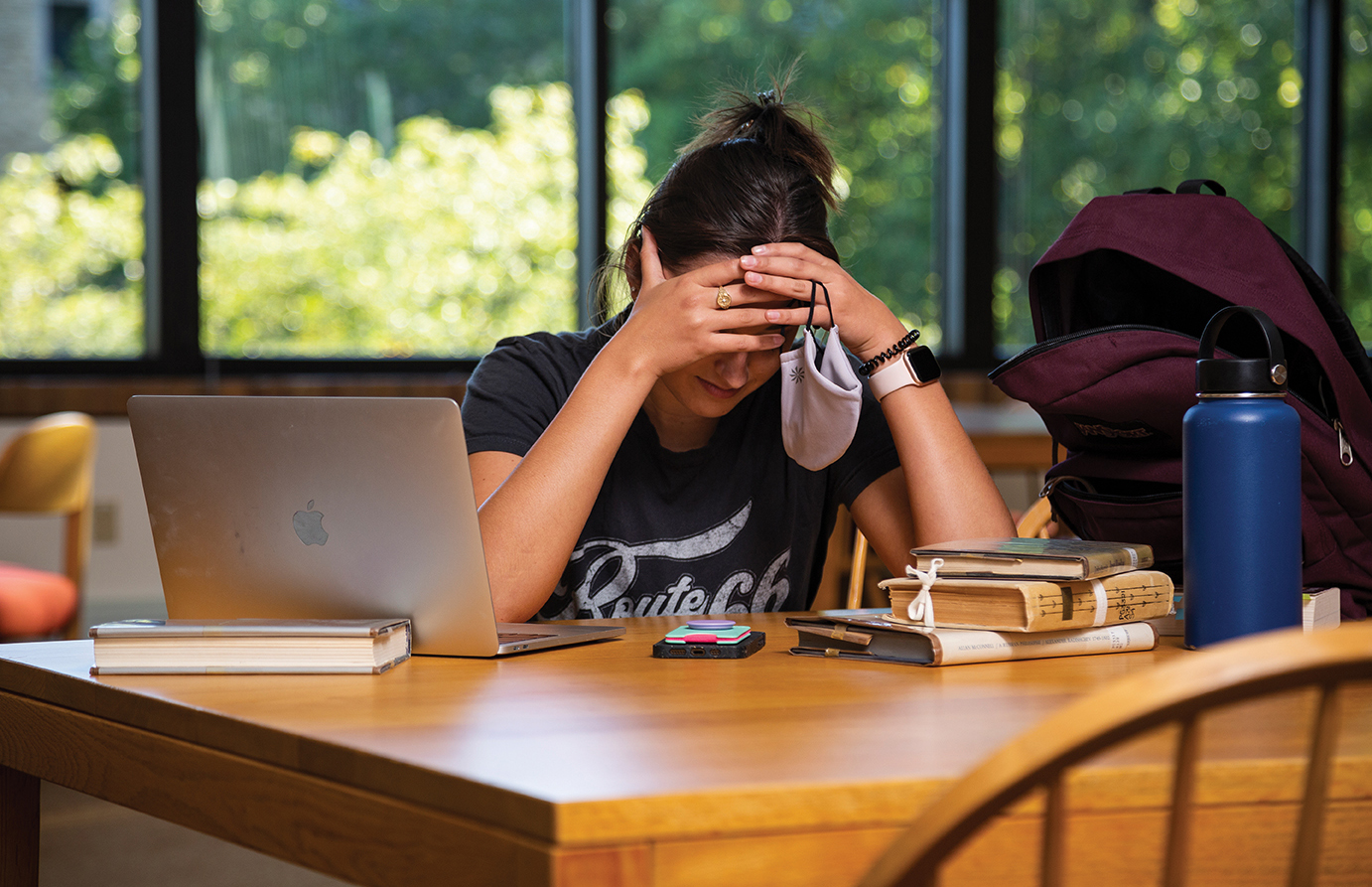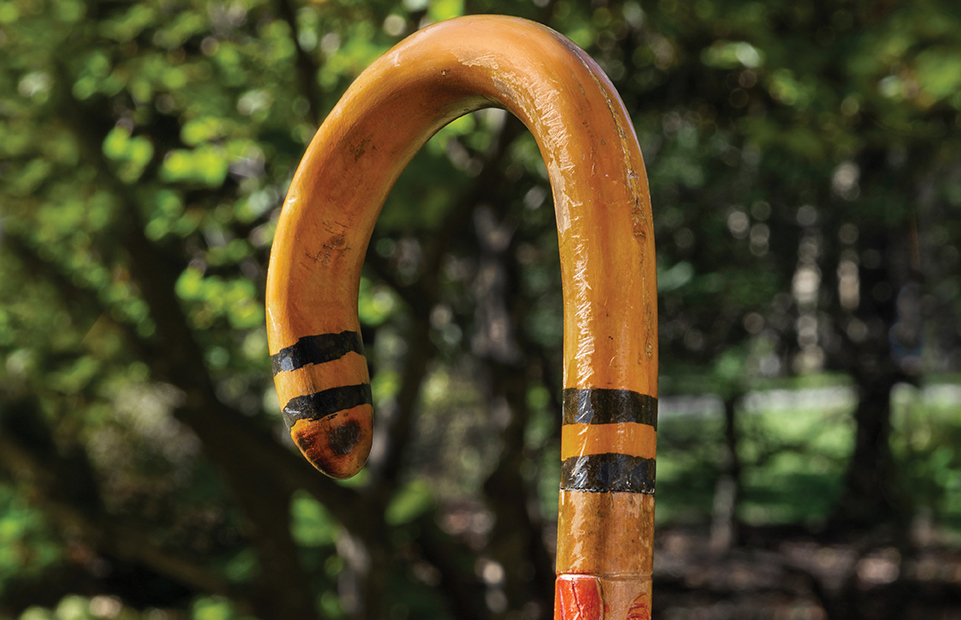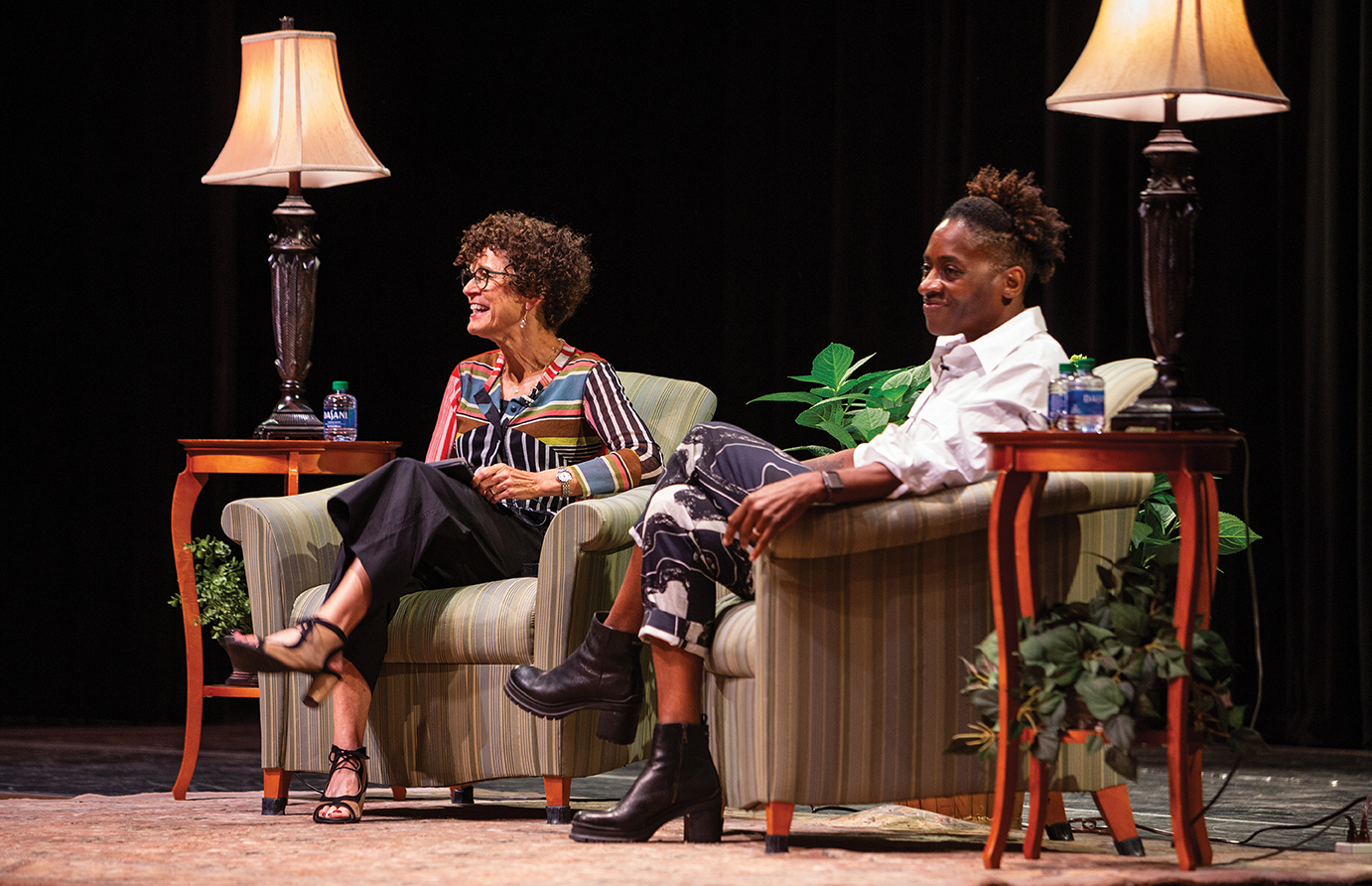Ongoing Anxiety as Pandemic Persists
Saint Mary's Stories
Understanding the Human Brain
Q & A with Catherine Pittman, professor of psychology
 For psychology professor Catherine Pittman, 2021 marks 32 years of teaching at Saint Mary’s. It also marks year two of the coronavirus pandemic, College protocol changes related to it, and safety concerns. Among the masked students in her in-person classrooms, as well as the clients at her private practice in South Bend, Pittman has observed how the ongoing pandemic continues to affect everyone’s well-being. Her takeaway? From a neurological perspective, most people have not ‘gotten used to things.’ Pittman’s passion for understanding the human brain has driven three decades of research, and provided expertise in helping others cope with ongoing stress and anxiety. We sat down with her to discuss the distress that is accompanying the pandemic today, and the continuation of shifting protocols and safety measures.
For psychology professor Catherine Pittman, 2021 marks 32 years of teaching at Saint Mary’s. It also marks year two of the coronavirus pandemic, College protocol changes related to it, and safety concerns. Among the masked students in her in-person classrooms, as well as the clients at her private practice in South Bend, Pittman has observed how the ongoing pandemic continues to affect everyone’s well-being. Her takeaway? From a neurological perspective, most people have not ‘gotten used to things.’ Pittman’s passion for understanding the human brain has driven three decades of research, and provided expertise in helping others cope with ongoing stress and anxiety. We sat down with her to discuss the distress that is accompanying the pandemic today, and the continuation of shifting protocols and safety measures.
Q: What are you seeing regarding mental health and the pandemic?
People are experiencing a lot more worry and anxiety. I have also seen decreases in social support available, so people face their worries—about health, how the pandemic will affect their finances, employment, personal safety, and their families—with less support. What’s more, we are not built to handle stress for this long. People are experiencing things like increased muscle tension and difficulty sleeping, and month after month of potential danger can lead some to develop depression.
Q: Can you explain what happens in the brain to elicit anxiety; what is the relationship between the brain and anxious feelings?
In my book Rewire Your Anxious Brain, I outline how the brain is wired to protect us. Over the centuries, the things that we humans fear and the things which cause danger to us have changed, but the brain still works the same way. We sense danger and respond by protecting ourselves.
The amygdala is key in this process. Located in the medial temporal lobe of the brain, it produces the body’s “fight or flight” response, which also causes the anxious feelings we experience. Think of the amygdala like the alarm system in our body. It is what produces fear, dread, anxiety, the sense that something negative is going to happen, and a set of physical responses even if there is no clear danger. We all live with these emotional reactions in our bodies. This is because the amygdala works faster than we can think and begins these responses, trying to protect us.
That being said, it’s important to note the difference between fear and danger. Fear is sometimes elicited even when there is no clear danger. Fear is the smoke detector going off even though there isn’t a fire—you just burned your dinner and it’s smoky in your kitchen. Danger is when the threat is clear and present—your dinner caught on fire in the oven and flames are shooting out. We need to recognize that feeling fear or anxiety does not always mean we are in danger. To be clear, the feelings and changes in our body are very real, but the danger may not be.
Q: What is the relationship between the brain, anxiety, and the media?
We are built to be fearful. While fear is a healthy emotion, we don’t need it to be elicited every day and every hour. Today, the availability of frightening information can be at our fingertips at any moment. We play a role in it, too, because we pay attention to information that frightens us. As we engage with news content, we begin to think about people in our families who are very vulnerable and worry about the people that we love. The amygdala is ignited. We may experience increased muscle tension, a sense of panic, difficulty sleeping, and more. This isn’t to say we should avoid the media. News outlets are such an important source of information, but can also be a source of misinformation. This is why it’s so important to understand how anxiety works in the body. We can’t always operate off our gut feelings. We need to learn how to manage our feelings, and not misinterpret them as reflections of reality. We can be inundated with information that is about danger, but we need to be able to talk about it and process it to be healthy.
Q: What is the best advice you can give about ongoing anxiety?
When the pandemic will end is unclear. Learning how to manage anxiety around the COVID-19 virus, and the ways it has changed our world is key to continuing to move forward. There are several practices that reduce the body’s stress response. While none of them may be new ideas, they are the scientifically researched and proven methods to manage anxiety.
Pittman recommends:
Schedule Sleep
One key factor in managing anxiety is to make sure that you’re getting enough sleep. Sleep is an important reset process for the brain. The amygdala can try to keep us up in a continuous loop of worries, because it was built to keep us awake if there is danger. But a person whose amygdala is more activated and gets less sleep is likely to be more anxious, irritable and fatigued. Seven or more hours of sleep are necessary to be equipped to continue handling the many stressors in our daily lives, especially during a time of ongoing stress.
More Moving
Any exercise—walking, running, yoga—helps reduce the activation in the amygdala. Regular exercise has the biggest benefit to stress, but even going out for a brisk run or walk when you’re starting to feel anxious can manage the feelings of anxiety.
Mind Your Thoughts
Being mindful of where your thoughts are going and what might be influencing them can dissolve them. Our thoughts have the power to activate the amygdala into creating a stress response even if there is no present danger, and with so much fear in the media our brains can be on the “COVID channel,” a place where we replay what we have heard. Constant updates on protocol changes or new cases can lead to worries circling as we play out hypothetical scenarios. Minimize your time on the “COVID channel” by focusing on other thoughts and activities in order to reduce amygdala activation. Your brain has more channels than cable TV so take advantage of them!
Play and Socialize
Finally, making time for social interaction, whether in person or virtual, is always important for stressful situations. We are social creatures and have a need to stay in touch with family and friends. Give yourself time to play and have fun; do things that make you laugh. We need that lightness and opportunity to relax.
Click here for more information on professor Pittman's research on anxiety.



